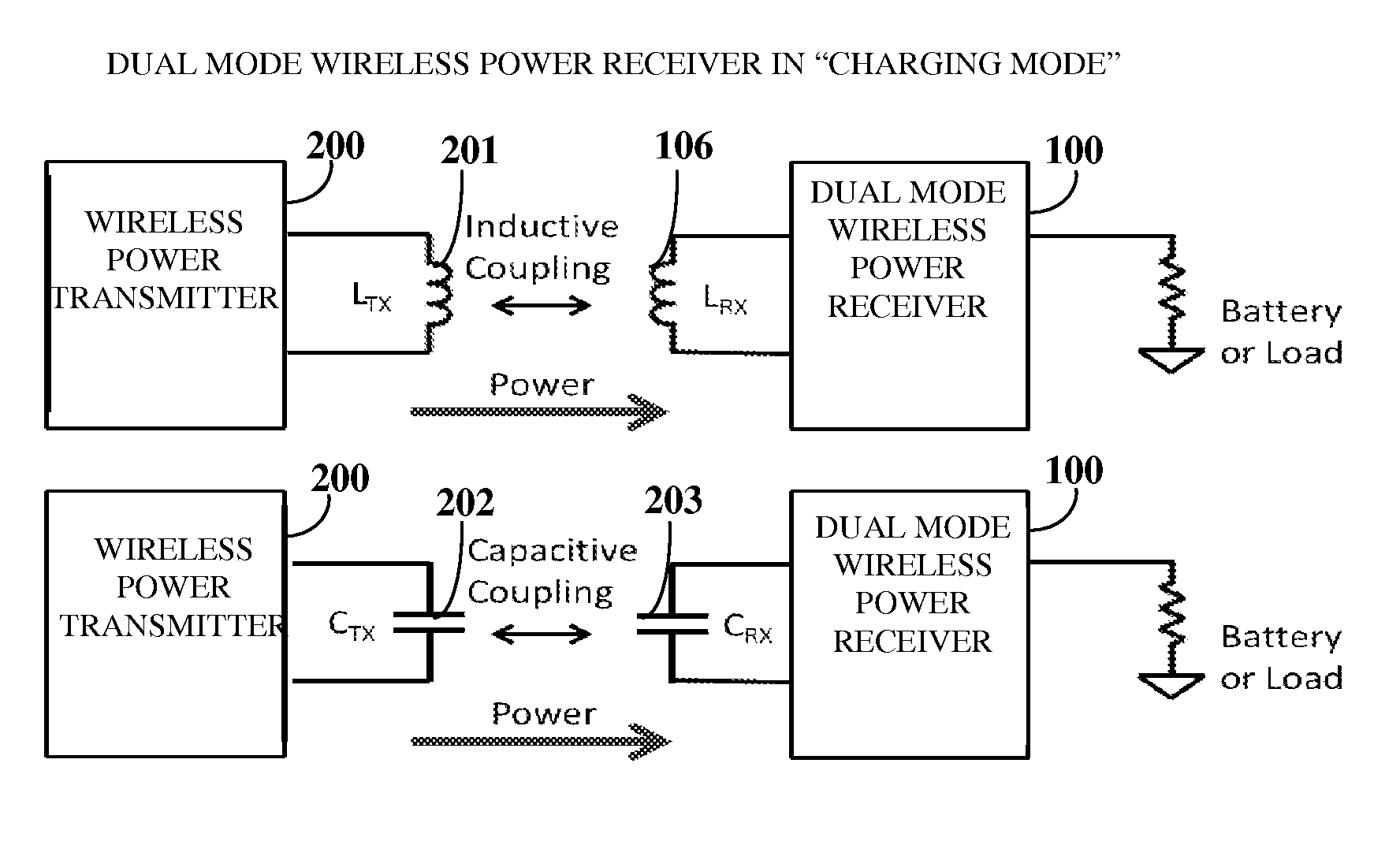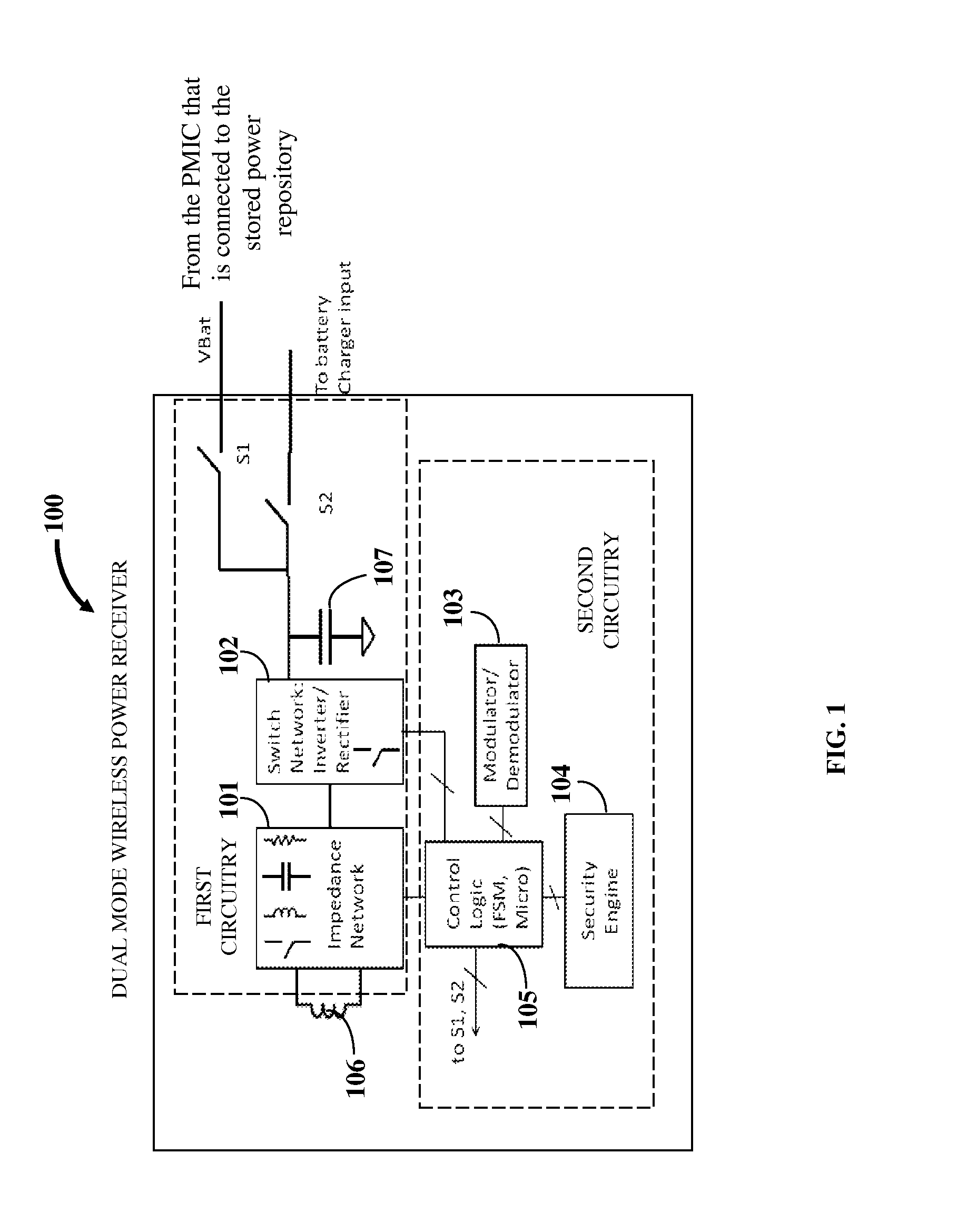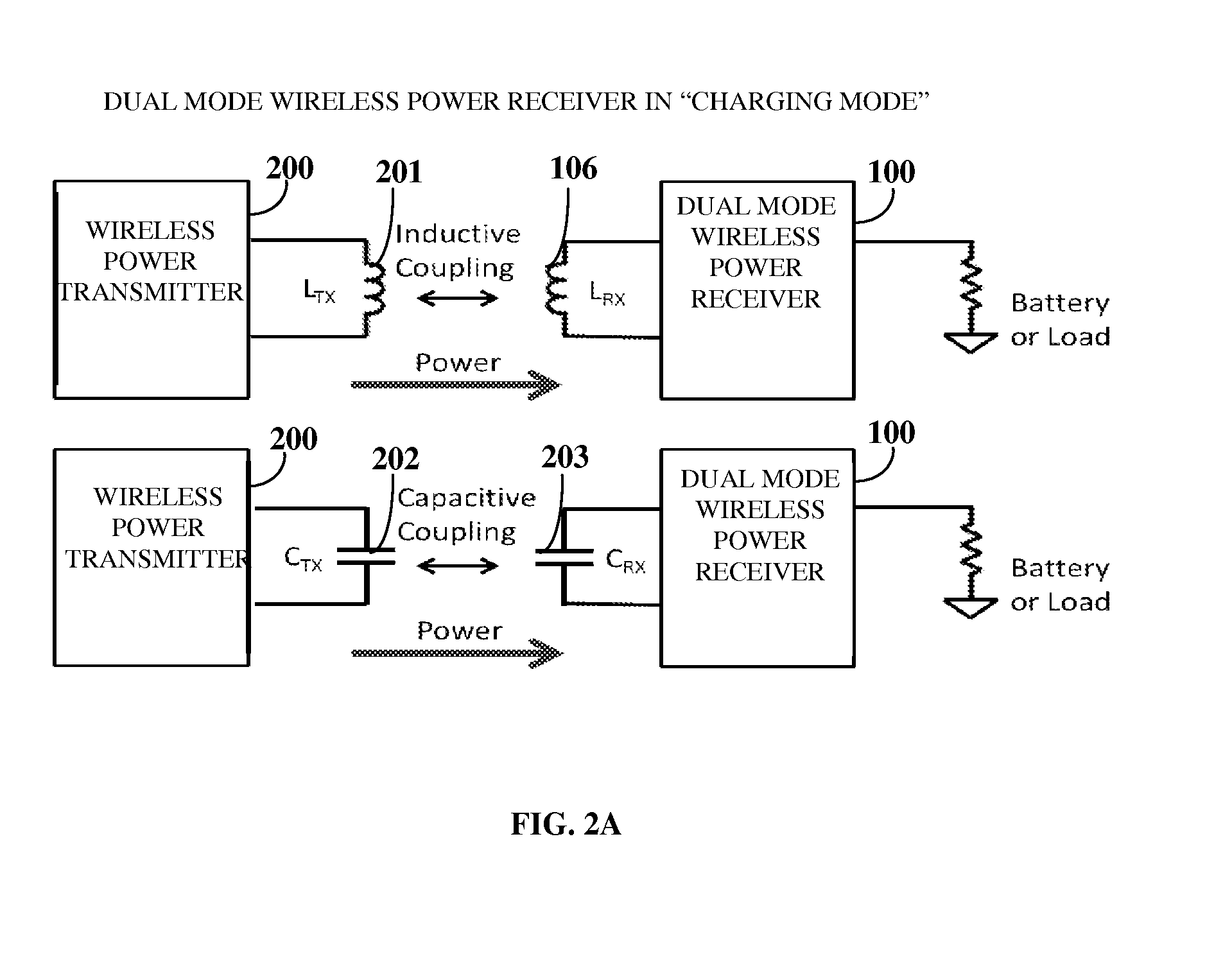Dual Mode Wireless Power Receiver
a wireless power receiver and dual-mode technology, applied in the direction of electrical apparatus construction details, transportation and packaging, support structure mounting, etc., can solve the problems of increasing the cost of parallel approach, increasing the cost of implementation, and reducing the transmission power, so as to increase the transmission power and reduce the transmission power
- Summary
- Abstract
- Description
- Claims
- Application Information
AI Technical Summary
Benefits of technology
Problems solved by technology
Method used
Image
Examples
first embodiment
[0053]FIG. 7A exemplarily illustrates the switch network 102 of the dual mode wireless power receiver 100 exemplarily illustrated in FIG. 3, in the communication mode. In the communication mode, the switch network 102 can be configured as a full bridge inverter by keeping switch S1a in an on state and driving switches S3, S4, S5, and S6 as per the timing relationship exemplarily illustrated in FIG. 7A. As exemplarily illustrated by the timing relationship waveform in FIG. 7A, switches S3 and S6 are driven on when the switches S4 and S5 are driven off and vice versa. In communication mode, switch S2 which is external to the switch network 102 is configured in an off state to ensure that the stored power is not recirculated as that would be very wasteful. Switch S1 which is external to the switch network 102 is configured in an on state to enable the switch network 102 to draw stored power via the power management integrated circuit (PMIC).
second embodiment
[0054]FIG. 7B exemplarily illustrates the switch network 102 of the dual mode wireless power receiver 100 exemplarily illustrated in FIG. 3, in the communication mode. The switch network 102 is configured as half bridge inverter by keeping switch S5 in an off state and switches S1a and S6 in an on state. Switches S3 and S4 are driven with the timing relationship exemplarily illustrated in FIG. 7B. Alternatively the switch network 102 can be configured as a half bridge inverter by keeping switch S3 in an off state and switches S1a and S4 in an on state. Switches S5 and S6 would be driven analogous to the timing relationship exemplarily illustrated in FIG. 7B with S5 substituting for S3 and S6 substituting for S4. In both these embodiments, switch S2 which is external to the switch network 102 is configured in an off state to ensure that the stored power is not recirculated as that would be very wasteful. Switch S1 which is external to the switch network 102 is configured in an on sta...
PUM
 Login to View More
Login to View More Abstract
Description
Claims
Application Information
 Login to View More
Login to View More - R&D
- Intellectual Property
- Life Sciences
- Materials
- Tech Scout
- Unparalleled Data Quality
- Higher Quality Content
- 60% Fewer Hallucinations
Browse by: Latest US Patents, China's latest patents, Technical Efficacy Thesaurus, Application Domain, Technology Topic, Popular Technical Reports.
© 2025 PatSnap. All rights reserved.Legal|Privacy policy|Modern Slavery Act Transparency Statement|Sitemap|About US| Contact US: help@patsnap.com



